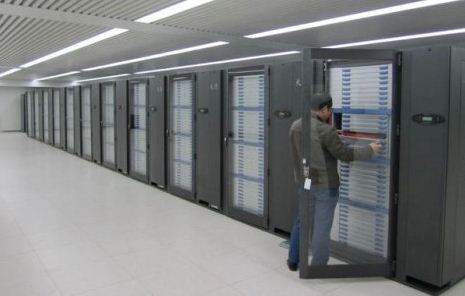World’s fastest supercomputer unveiled in China.
Posted: Thu Oct 28, 2010 3:39 pm
World’s fastest supercomputer unveiled in China
By Mark Brown

"A new supercomputer, unveiled today at the annual High Performance Computing conference in China (HPC China 2010), has been declared the fastest supercomputer in the world."
The record-breaking performance was measured by the LINPACK benchmark, a system designed in the early 70s to test how fast a computer can solve a dense system of equations. And the score? 2.5 petaflops -- "flops", being a measure of floating point operations per second, and "peta" meaning a thousand trillion. That's 2.5 thousand trillion calculations per second, and the machine has a theoretical maximum performance of over four thousand trillion calculations per second.
The previous winner was the Cray XT5, a supercomputer launched in 2007 and currently found in the Oak Ridge National Laboratories in Tennessee. It had an upgrade in 2009, bringing its performance to 1.75 petaflops, thanks to 224,162 AMD Opteron CPUs, and snatching the top spot globally.
Until today, as China beats out the United States with this new system. The Tianhe-1A supercomputer packs in 7,168 Nvidia Tesla graphics cards, and 14,336 CPUs, and it consumes 4.04 megawatts of power.
Californian graphics chipset manufacturer Nvidia claims that its success lies in using its Telsa GPU in parallel with CPUs to get more power in less space, and cut down on power consumption. Without the Tesla chips, the system would allegedly require an estimated 50,000 CPUs, twice as much floor space and 12 megawatts of power.
China’s new supercomputer will be used to greatly speed up large scale scientific computations, such as "hurricane and tsunami modeling, cancer research, car design, even studying the formation of galaxies".
By Mark Brown
"A new supercomputer, unveiled today at the annual High Performance Computing conference in China (HPC China 2010), has been declared the fastest supercomputer in the world."
The record-breaking performance was measured by the LINPACK benchmark, a system designed in the early 70s to test how fast a computer can solve a dense system of equations. And the score? 2.5 petaflops -- "flops", being a measure of floating point operations per second, and "peta" meaning a thousand trillion. That's 2.5 thousand trillion calculations per second, and the machine has a theoretical maximum performance of over four thousand trillion calculations per second.
The previous winner was the Cray XT5, a supercomputer launched in 2007 and currently found in the Oak Ridge National Laboratories in Tennessee. It had an upgrade in 2009, bringing its performance to 1.75 petaflops, thanks to 224,162 AMD Opteron CPUs, and snatching the top spot globally.
Until today, as China beats out the United States with this new system. The Tianhe-1A supercomputer packs in 7,168 Nvidia Tesla graphics cards, and 14,336 CPUs, and it consumes 4.04 megawatts of power.
Californian graphics chipset manufacturer Nvidia claims that its success lies in using its Telsa GPU in parallel with CPUs to get more power in less space, and cut down on power consumption. Without the Tesla chips, the system would allegedly require an estimated 50,000 CPUs, twice as much floor space and 12 megawatts of power.
China’s new supercomputer will be used to greatly speed up large scale scientific computations, such as "hurricane and tsunami modeling, cancer research, car design, even studying the formation of galaxies".